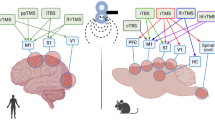Abstract
By his experimental and theoretical work on the physiology and pathophysiology of the higher nervous activity I.P. Pavlov significantly influenced the development of Neuroscience. During the 1950 Pavlovian Conference in Moscow, Stalin and the Communist Party tried to dogmatize his and his pupils’ fundamental theories. But the Pavlovian ideas were developed by his pupils in open discussions with representatives of other schools in a very creative way, opening the doors for a systemic approach to understanding the integrative functional systems of brain and behavior. Pavlov emphasized the high plasticity of the central nervous system investigated the complex functional systems within the brain and between the organism and its environment, and designed models for pathological deviations of the higher nervous activity. During his last years, he freed himself from the strong deterministic view and characterized the organism and its environment as a self-organizing system.
Similar content being viewed by others
References
Anochin, P.K. (1978). Beiträge zur allgemeinen Theorie des funktionellen Systems. Jena.
Bechterew, M.W. (1926). Allgemeine Grundlagen der Reflexologie des Menschen. Leipzig-Wien.
Bernstein, N.A. (1987). Bewegungsphysiologie. 2. Aufl., Leipzig.
Feigenberg, I.M., Latash, L.P., and Bernstein, N.A. (1996). “The reformer of neuroscience”. In: Latash, L.P., Turvey, M.T. (Eds): Dexterity and its Development. Mahwah, N.J. pp. 247–275.
Feigenberg, I.M. and Shuravljov, G.J. (Eds) (1977). Probabilistic Prognostication in Human Activity (Russian). Moscow.
Jantsch, E. (1975). Design for Evolution: Self-Organization and Planning in th Life of Human Systems. New York.
Konorski, J. (1948). Conditioned Reflexes and Neuron Organization. Cambridge.
Konorski, J. (1967). Integrative Activity of the Brain. An Interdisciplinary Approach. Chicago.
Luria, A.R. (1966). Higher Cortical Functions in Man. New York.
Luria, A.R. (1973). The Working Brain. New York.
Pavlovian Conference on Higher Nervous Activity. (1961).Ann. NY Acad. Sci. 92:813–1198.
Pavlow, I.P. (1953). Ausgewählte Werke, Berlin.
Pawlow, I.P. (1953–1954). Sämtliche Werke, Bd. I–VI. Berlin.
Pawlow. I.P. (1956). Pawlowsche Mittwochkolloquien. Bd. I–III. Berlin.
Pawlow, I.P. (1998). Gesammelte Werke über die Physiologie und Pathologie der höheren Nerventätigkeit. Hrsg. L. Pickenhain. Würzburg.
Pickenhain, L. (1989). I.P. Pawlow-Persönlichkeit und Werk. Jahrb. f Psychopathol. u. Psychother. IX, 216–230.
Pickenhain, L. (1991). “Reflexology in psychiatry”. In: Seva, A. (Hrsg.): The European Handbook of Psychiatry and Mental Health. Vol. I. Zaragoza, pp. 175–181.
Pickenhain, L. (1994). Lurijas neuropsychologische Theorie und ihre Bedeutung für die Neurowissenschaft. In: W. Jantzen et al. (Hrsg.): Fortschritte der Psychologie, Bd. 6, S. 33–60, Bremen.
Pickenhain, L. (1998). “Das Schicksal der Pawlowschen Ideen in der UdSSR”. In: Pawlow, I.P: Gesammelte Werke über die Physiologie und Pathologie der höheren Nerventätigkeit. Würzburg, pp. 373–408
Rose, K.W., Evold, E., and Hiltzig, L.R. (1991). “Ivan Pavlov on communist dogmatism and the autonomy of science in the Soviet Union in the early 1950s”Minerva Rev. Sci Learning Policy 29:463–475.
Todes, D.P. (1995). “Pavlov and the Bolsheviks”,Hist. Phil. Life Sci., 17:379–418.
Windholz, G. (1997). “The 1950 joint scientific session: Pavlovians as the accusers and the accused”J. Hist. Behav. Sci. 33:61–81.
Wissenschaftliche Tagung über die Probleme der physiologischen Lehre I.P. Pawlows. (1954). Moskau, 28. Juni bis 4. Juli 1950. Stenographischer Bericht in 5 Heften, 912 S., Berlin.
Author information
Authors and Affiliations
Corresponding author
Additional information
Lecture at the Annual Meeting of the Pavlovian Society, November 1, 1998, Dusseldorf, Germany.
Rights and permissions
About this article
Cite this article
Pickehain, L. The importance of I. P. Pavlov for the development of neuroscience. Integrative Physiological and Behavioral Science 34, 85–89 (1999). https://doi.org/10.1007/BF02688714
Issue Date:
DOI: https://doi.org/10.1007/BF02688714




